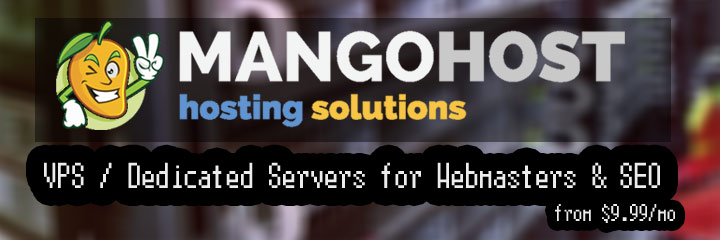
 Get the solution ↓↓↓
Get the solution ↓↓↓
As the comments above suggest, it's worth using query parameters to protect yourself from SQL injection.
You asked for an example of how anything malicious could be done. In fact, it doesn't even need to be malicious. Any innocent string that legitimately contains an apostrophe could break your SQL query. Malicious SQL injection takes advantage of that weakness.
The weakness is fixed by keeping dynamic values separate from your SQL query until after the query is parsed. We use query parameter placeholders in the SQL string, then useprepare() to parse it, and after that combine the values when youexecute() the prepared query. That way it remains safe.
Here's how I would write your function. I'm assuming using PDO which supports named query parameters. I recommend using PDO instead of Mysqli.
function updateProfile( $vars, $userId ) {
$db = new Database();
$safeArray = [
"gradYear",
"emailAddress",
"token",
"iosToken",
"country",
"birthYear",
"userDescription",
];
// Filter $vars to include only keys that exist in $safeArray.
$data = array_intersect_keys($vars, array_flip($safeArray));
// This might result in an empty array if none of the $vars keys were valid.
if (count($data) == 0) {
trigger_error("Error: no valid columns named in: ".print_r($vars, true));
$response = ["response" => 400, "title" => "no valid fields found"];
return $response;
}
// Build list of update assignments for SET clause using query parameters.
// Remember to use back-ticks around column names, in case one conflicts with an SQL reserved keyword.
$updateAssignments = array_map(function($column) { return "`$column` = :$column"; }, array_keys($data));
$updateString = implode(",", $updateAssignments);
// Add parameter for WHERE clause to $data.
// This must be added after $data is used to build the update assignments.
$data["userIdWhere"] = $userId;
$sqlStatement = "update users set $updateString where userId = :userIdWhere";
$stmt = $db->prepare($sqlStatement);
if ($stmt === false) {
$err = $db->errorInfo();
trigger_error("Error: {$err[2]} preparing SQL query: $sqlStatement");
$response = ["response" => 500, "title" => "database error, please report it to the site administrator"];
return $response;
}
$ok = $stmt->execute($data);
if ($ok === false) {
$err = $stmt->errorInfo();
trigger_error("Error: {$err[2]} executing SQL query: $sqlStatement");
$response = ["response" => 500, "title" => "database error, please report it to the site administrator"];
return $response;
}
$response = ["response" => 200, "title" => "update successful"];
return $response;
}
In addition to the excellent Bill's answer, one little suggestion: always make your methods to do one thing at a time. If a method's job is to update a database, then it should only update a database and nothing else, the HTTP interaction included. Imagine this method could be used in non-AJAX context or without a web-server at all but from a command line utility. Those HTTP codes and JSON responses would look completely off the track. So have two classes: one to update the database and one to interact with the client. It will make your code much cleaner and reusable.
Also, never create a new connection to the database for the every query. Instead, have a ready made connection and use it for all database interactions.
function updateProfile($db, $vars, $userId )
{
$safeArray = array( "gradYear", "emailAddress", "token", "iosToken", "country",
"birthYear", "userDescription" );
// let's check if all columns are safe
if (array_diff(array_keys($vars), $safeArray)) {
throw new InvalidArgumentException("Unknown columns provided");
}
$updateAssignments = array_map(function($column) {
return "`$column` = :$column"; }, array_keys($vars)
);
$updateString = implode(",", $updateAssignments);
$vars["userIdWhere"] = $userId;
$sqlStatement = "update users set $updateString where userId = :userIdWhere";
$db->prepare($sqlStatement)->execute($vars);
}
See, it makes your code slim and readable. And, above all - reusable. You don't have to make your methods bloated. PHP is a very concise language, if used properly
Our community is visited by hundreds of web development professionals every day. Ask your question and get a quick answer for free.
Find the answer in similar questions on our website.
Do you know the answer to this question? Write a quick response to it. With your help, we will make our community stronger.
PHP (from the English Hypertext Preprocessor - hypertext preprocessor) is a scripting programming language for developing web applications. Supported by most hosting providers, it is one of the most popular tools for creating dynamic websites.
The PHP scripting language has gained wide popularity due to its processing speed, simplicity, cross-platform, functionality and distribution of source codes under its own license.
https://www.php.net/
Slim is, as its name suggests, a micro-framework that is compact and fast. The reason for its such characteristics lies in the fact that it is completely independent of third-party code. It was created in 2010, at the moment its most recent version is 4.5.0.
https://www.slimframework.com/
DBMS is a database management system. It is designed to change, search, add and delete information in the database. There are many DBMSs designed for similar purposes with different features. One of the most popular is MySQL.
It is a software tool designed to work with relational SQL databases. It is easy to learn even for site owners who are not professional programmers or administrators. MySQL DBMS also allows you to export and import data, which is convenient when moving large amounts of information.
https://www.mysql.com/

Welcome to the Q&A site for web developers. Here you can ask a question about the problem you are facing and get answers from other experts. We have created a user-friendly interface so that you can quickly and free of charge ask a question about a web programming problem. We also invite other experts to join our community and help other members who ask questions. In addition, you can use our search for questions with a solution.
Ask about the real problem you are facing. Describe in detail what you are doing and what you want to achieve.
Our goal is to create a strong community in which everyone will support each other. If you find a question and know the answer to it, help others with your knowledge.